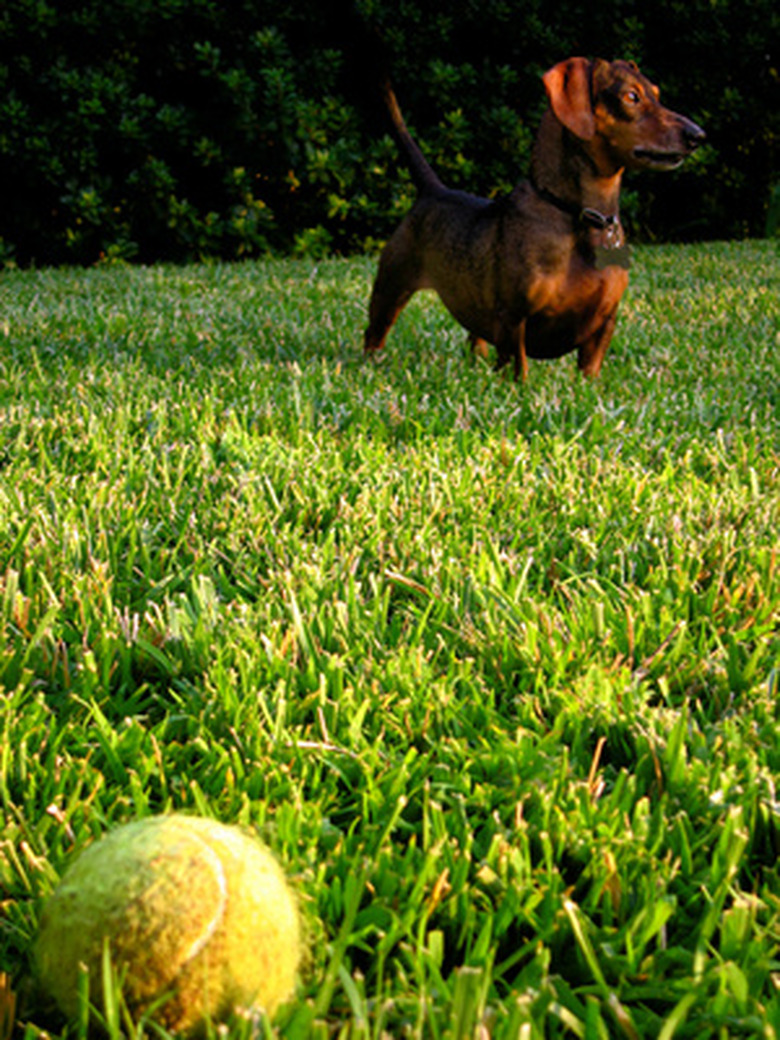Scotts Lawn Fertilizer & Pets
If you're a pet owner and are considering using Scotts lawn fertilizer products, you may be concerned for your pets' safety. Scotts suggests that no record of harm to pets or humans has been reported when its fertilizer is used. However, this only holds true if the fertilizer is applied by a professional Scotts technician. Many homeowners apply Scotts lawn fertilizer themselves. Understand the precautions and safety issues before fertilizing your lawn.
Fertilizer Contents
Scotts lawn fertilizer includes three major elements — nitrogen, phosphorous and potassium. If the fertilizer is a fast-release type, it uses nitrogen-containing urea, ammonium nitrate and ammonium sulfate. Controlled-release fertilizer uses nitrogen containing ureaform, sulfur-coated urea, activated sewage sludge and IBDU (Isobutylidene diurea). Additionally, if the fertilizer also treats for lawn pests, it contains the pesticide bifenthren. If it treats for weeds it contains herbicides such as 2,4-D, dicamba and MCPP.
- If you're a pet owner and are considering using Scotts lawn fertilizer products, you may be concerned for your pets' safety.
- Additionally, if the fertilizer also treats for lawn pests, it contains the pesticide bifenthren.
Scotts Claim
The Scotts lawn fertilizer package states its product poses no significant threat to pets or humans if it has been applied by a Scotts professional technician in strict compliance with label instructions.
Contact
Pets come in contact with fertilizer chemicals in several ways. After your lawn has been fertilized, if your pets run and play on the lawn, the fertilizer may get on the animal's paws and fur. In addition, when your pet cleans itself, the fertilizer may be ingested. The same holds true for dogs or cats that frequently chew and swallow grass. Depending on the type of fertilizer, your pet may have adverse reactions.
Breathing
Even if the fertilizer has been watered in, because of your pet's close proximity to the ground the fumes from the nitrogen, phosphorous and potassium will be inhaled. Pets may be sensitive to the fumes and experience adverse effects.
- The Scotts lawn fertilizer package states its product poses no significant threat to pets or humans if it has been applied by a Scotts professional technician in strict compliance with label instructions.
- In addition, when your pet cleans itself, the fertilizer may be ingested.
Symptoms
Pets, especially dogs, that ingest or otherwise come in contact with lawn chemicals, may display symptoms such as rashes, diarrhea or vomiting, seizures and possibly death.
Prevention
Before applying Scotts lawn fertilizer to your lawn, remove all pet toys such as balls, bones and chew toys. Follow the directions on the package and water the fertilizer in if required. Keep pets off the lawn for 24 hours.
